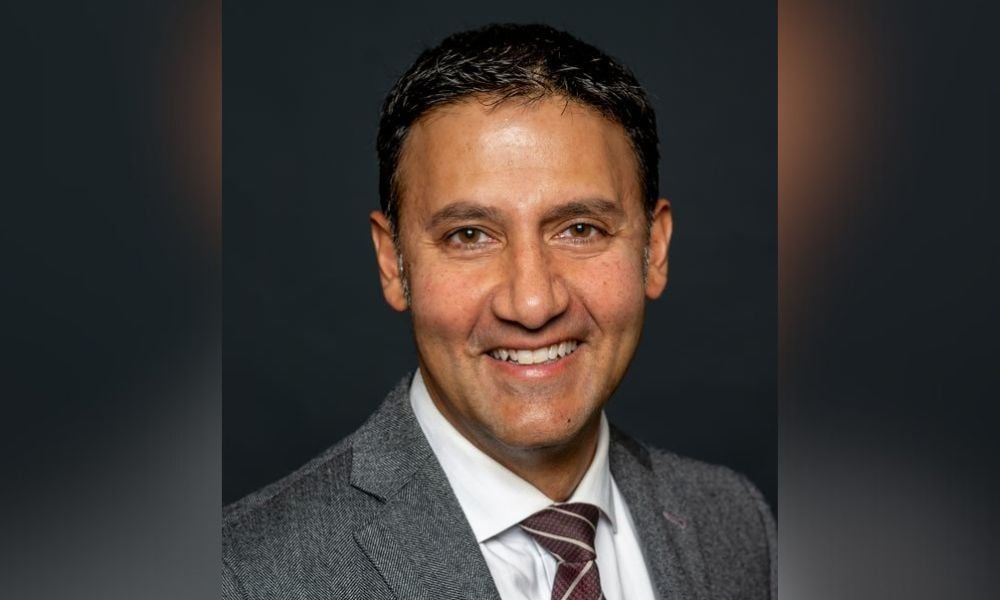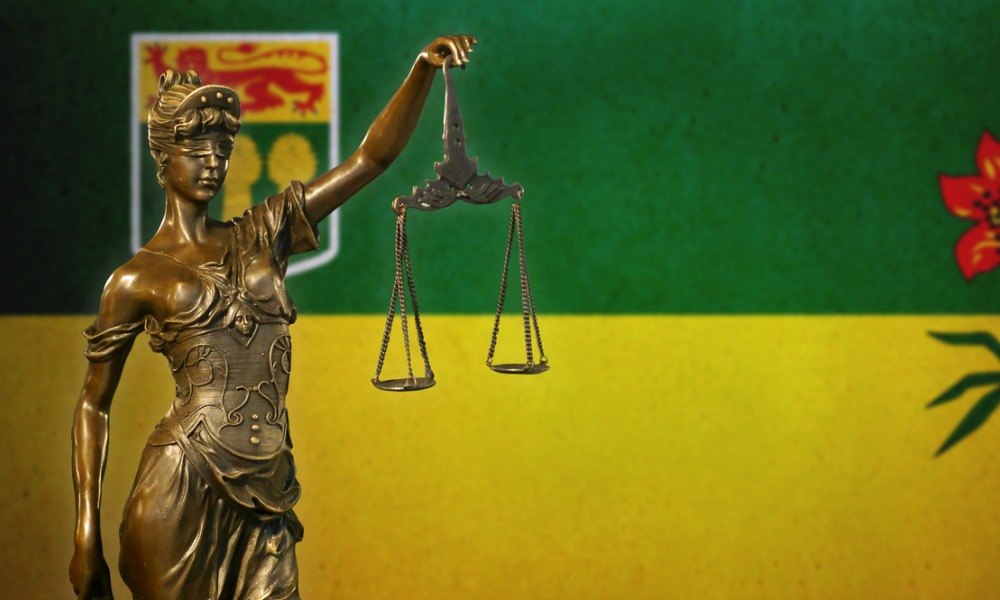While the Liberal government has moved forward with some reforms, many promises remain unfulfilled.

While the Liberal government has moved forward with some reforms, many promises remain unfulfilled.
Are the normal sanctions imposed by the trial judge sufficient or should these individuals, barely able to pay their monthly expenses, also be required to pay financial penalties for their offences?
The court will jointly hear appeals from rulings by the Quebec and Ontario appeal courts on whether the imposition of mandatory victim fine surcharges for every criminal offence are cruel and unusual punishment under the Charter. The provisions, which require fines of $100 for every summary conviction offence and $200 per indictable offence such as murder, attracted controversy immediately after they were enacted five years ago.
Provincial court judges tried to find ways to avoid imposing the fines on indigent defendants who usually had mental health or addiction issues and were unlikely ever to be able to pay. “It is a cruelty in some measure to tell an offender that they must discharge an impossible sentence before their debt is expunged,” wrote then-Ontario provincial court Justice David Paciocco in his 2014 decision in R. v. Michael, where he found that the mandatory fines were a breach of the Charter (Paciocco was elevated last year to the Court of Appeal).
The critics of these provisions included the newly elected Liberal government of Justin Trudeau. In the fall of 2016, Justice Minister Jody Wilson-Raybould introduced a bill to return discretion to trial judges on whether to impose the fines.
That bill was never moved forward by the Liberals even as litigation over whether it was constitutional moved forward in Ontario and Quebec. Both provincial appeal courts concluded that the provisions did not violate the Charter — unanimously in Ontario, but with a dissent in Quebec.
The Public Prosecution Service of Canada was an intervener in both provincial appeal courts, supporting the argument that the existing legislation was valid and complied with the Charter. Late last fall, after the Supreme Court of Canada granted leave, the federal government suddenly withdrew as a party and will not be participating in the hearing this spring.
For legal organizations that assist disadvantaged individuals, the actions of the Liberal government are puzzling. “It is not that easy to show that the surcharge is unconstitutional. That is why it is so important for the legislation to come in,” says Jonathan Rudin, program director of the Aboriginal Legal Services clinic in Toronto, which is an intervener in the upcoming Supreme Court hearing. “If you are unable to pay, it does nothing to support victims,” Rudin adds.
In fact, according to data released by the Ontario Ministry of the Attorney General, more than 90 per cent of its annual revenue from victim fine surcharges comes from provincial offences, such as speeding tickets, not from those convicted under the Criminal Code.
The night of his election victory, Trudeau promised a change in the way his party would govern. The sentiment was repeated in the mandate letters sent to cabinet ministers a few weeks later in the fall of 2015, which were released to the public. One of the most ambitious of these letters was the one directed to Wilson-Raybould.
“Canadians do not expect us to be perfect — they expect us to be honest, open, and sincere in our efforts to serve the public interest. Our platform guides our government. Over the course of our four-year mandate, I expect us to deliver on all of our commitments,” the prime minister stated.
Nearly two-and-a-half years after the federal election, the Liberal government has followed through on pledges to legalize the possession of small amounts of cannabis and established the inquiry into Missing and Murdered Indigenous Women and Girls — although its work has been plagued by delays and resignations of senior staff.
In many other areas, though, especially with respect to reforms to the judicial system and increased transparency, the promised changes are moving along very slowly or, if there is ongoing litigation, there exists a seeming disconnect between public statements by politicians and what government lawyers argue in court.
Even small changes such as restoring the Court Challenges Program have not yet been fully implemented. In areas such as family law, reforms and modernization of relevant statutes still appear to be on the backburner.
Given that the Liberals have a majority government and are well over halfway through their mandate, the apparent inaction is disappointing, says Michael Lacy, a Toronto defence lawyer and president of the Criminal Lawyers’ Association of Ontario. “The Liberals put forward a proactive agenda for criminal justice reform. But there does not seem to be a lot of action,” says Lacy, partner at Brauti Thorning Zibarras LLP in Toronto.
The focus instead has been on discussions with interested parties and seeking feedback from the public through consultations posted on government websites. “Consultation is obviously laudable. But at some point, the government of the day has to make decisions,” Lacy says.
One of the areas where there has been significant consultation is whether to rescind changes to the record suspension (pardon) process made by the former Conservative government that increased fees and retroactively doubled the period before an individual could apply.
In the meantime, the British Columbia Supreme Court ruled last year that the retroactive changes violated the Charter. In a similar challenge in Ontario after the B.C. decision was issued, the federal government conceded the invalidity of this part of the legislation.
Until the federal government enacts a new law, though, the existing provisions apply everywhere in the country except B.C. and Ontario. Lacy, who acted for one of the individuals in the Ontario litigation, says ensuring the rules are the same across the country should be a priority. “Why would you require applicants [in other provinces] to go through the necessity of a Charter challenge?” he asks.
While there is still a commitment to amend the rules around pardons, the federal government is not indicating when these changes will be introduced.
Another issue that has been subject to Charter challenges and has arguably received a higher public profile is the rules around solitary confinement in federal prisons.
The Canadian Civil Liberties Association in Ontario and the B.C. Civil Liberties Association, along with the John Howard Society, initiated proceedings challenging the constitutionality of indefinite “administrative segregation” of inmates in federal institutions.
Public Safety Minister Ralph Goodale introduced legislation last June that would impose an initial cap of 21 days at a time for this type of confinement. The maximum would be reduced to 15 days within 18 months after the measures became law. That bill also did not advance beyond first reading after it was introduced.
Once the bill was introduced, though, lawyers for the federal government unsuccessfully argued that this was sufficient reason to adjourn the B.C. proceeding, which was larger in scope and had more evidence that was going to be presented to the court than the Ontario proceeding. In both cases, the existing rules for placing inmates in solitary confinement for non-disciplinary reasons were vigorously defended by the federal government.
One of the arguments, rejected both by B.C. Supreme Court Justice Peter Leask and Ontario Superior Court Justice Frank Marrocco, was that, when the Correctional Service of Canada decided to put an inmate in administrative segregation, that did not meet the legal test of “solitary confinement.”
Both judges stated that under the “Nelson Mandela rules” — the name for the United Nations Standard Minimum Rules for the Treatment of Prisoners — the conditions for these inmates in Canadian prisons was solitary confinement.
During the B.C. proceeding, an expert witness for the federal government suggested that the maximum cap for segregation should be 60 days.
Alison Latimer, co-counsel for the plaintiffs in the B.C. case, says the federal government was sending a “conflicting message” in terms of its position on solitary confinement. She notes that the mandate letter issued by Trudeau to the Justice minister suggested it would implement the recommendations of the Ashley Smith inquest. The jury in the inquest looking into the death of the young woman in 2007 in an Ontario prison called for strict limits on solitary confinement.
“There was a conflict between what was said publicly and how the legislation was being defended in court,” notes Latimer, partner at Arvay Finlay LLP in Vancouver.
The impugned sections in the Corrections and Conditional Release Act were found to be unconstitutional in both cases. The judges also suspended their declarations of invalidity for 12 months to give the federal government time to amend the statute.
The CCLA has filed an appeal of the Ontario ruling because it concluded that reviews of decisions to keep inmates in solitary could still be considered independent if conducted by an outside individual within the correctional service.
Leask, in his ruling, disagreed with his Ontario counterpart and found that any reviews must be done externally and also have enforcement power.
Scott Bardsley, a spokesman for the Public Safety minister, says the Liberal government has been committed to reforms within the correctional system. “We are reviewing all recent court judgments; we will identify any further and better ideas that need to be incorporated in our reform package. But we have been proactive from the beginning and our work is already well advanced,” said Bardsley in a statement released on behalf of the minister.
The legislation introduced by the Liberal government to amend the regulations around solitary confinement was a positive start, suggests Lisa Kerr, a criminal law professor at Queen’s University in Kingston, Ont. and an authority on prison law. “For 30 years, no one has done a thing. No government has touched it,” says Kerr, who also provided legal assistance to the BCCLA in the B.C. case.
At the same time, the ruling by Leask makes it clear that, as the legislation stands now, it is “not Charter compliant,” she explains. The external review provided for in the proposed legislation is not binding on the warden of a federal institution. As a result, there is only a “soft cap” on the maximum days permitted in solitary, notes Kerr.
The review process is just one area where the proposed bill will have to be amended so that the solitary confinement framework does not breach the Charter, the law professor observes. She does not fault the Liberal government, though, for the way it is tackling the issue. “Governments are complex things. You need the bureaucracy as well to move things forward,” says Kerr.
Corrections officials have been very resistant to change and she says the Liberals are taking the right steps to try to get them onside. “In the history of prison reform, it is not helpful to come up with a new set of laws if you don’t take the time to get institutional buy-in and try to ensure that the correctional officers on the ground will respect the rules,” says Kerr.
One of the central themes in reforms promised by the Liberal government has been to try to address inequalities facing indigenous peoples, especially those within the criminal justice system. One of the many areas where they were impacted by the policies of the former Conservative government, says Rudin, was through its increase in the number of offences with mandatory minimum sentences.
If an offence includes a mandatory minimum, then a court has no right to impose a conditional sentence. The Supreme Court of Canada has struck down some of these provisions as unconstitutional, but the federal prosecution service continues to argue to maintain the ones that remain.
Aboriginal Legal Services is an intervener in an ongoing challenge to mandatory minimums for importing drugs. The Ontario Superior Court case involves a 21-year-old indigenous woman and single mother, caught as a “drug mule” with cocaine in a checked bag on a flight from Trinidad. The young woman had a troubled upbringing including being sexually assaulted by two men when she was 13.
Federal prosecutors in their written submissions agreed the woman had a difficult life with a serious history of violence in her family and financial problems. But if the mandatory minimum were struck down because of the circumstances of an offender, it could lead to more drug importing. “Imposing very lenient sentences on vulnerable female Aboriginal drug couriers may counterproductively serve to increase their utility to drug importers,” they wrote.
Striking down mandatory minimums only means that trial judges have more discretion so that, in rare instances, there may be a more lenient sentence if circumstances warrant, notes Rudin, in response to the position taken by the federal Crown in this case.
“This is not the previous government. We know this government understands the issues and is sympathetic. That makes it doubly frustrating,” he says.
While declining to comment on any specific case, a spokesperson for the Department of Justice stressed that the Public Prosecution Service of Canada is an independent organization. “The relationship between the attorney general and the director is premised on principles of respect for the independence of the prosecution function and the need to consult on important matters of general interest,” the spokesperson wrote in an email.
REPORT CARD
FAMILY LAW REFORM: F
The pledges included in the mandate letters issued by Prime Minister Justin Trudeau included the expansion of the unified family court system.
The first unified family court was initiated as a pilot project in Hamilton in the late 1970s. There are now seven provinces with unified family courts in a total of almost 40 municipalities.
Given the shared jurisdiction over family law, the unified model is aimed at streamlining the process for couples who are separating or in divorce proceedings. Last fall, the chief justice of the Superior Court of Ontario called on the federal government to support the expansion of the unified family court model in the province.
So far, though, there is very little movement on this issue or other areas of concern to the family bar in the country, says Wayne Barkauskas, partner at Wise Scheible Barkauskas in Calgary. “I don’t think there is any political reason. It is just not on their list of priorities,” says Barkauskas, a past chairman of the family law section of the Canadian Bar Association.
“Unified family courts pop up their head every few years,” he notes. While the concept is widely praised, there is likely going to be a debate between the provinces and the federal government over who is going to pay, he says.
A spokesperson for the federal Department of Justice says it is “working with” provinces and territories to gauge the interest in expanding the number of these courts. Any expansion, though, would require an agreement on a “funding formula” and amendments to permit the appointment of more judges.
Modernizing the federal Divorce Act should also be a priority, says Barkauskas, noting that there have been no substantial amendments to the statute in more than 30 years.
The most significant and pressing issue in Alberta in the family law field, however, is not the creation of new courts or statutory reform but filling up the existing vacancies on the Court of Queen’s Bench.
The provincial government and even senior members of the judiciary in Alberta have repeatedly called on the federal government to move more quickly to fill vacancies. The website of the Office of the Commissioner for Federal Judicial Affairs indicates that there were 12 vacancies in the province as of Jan. 1. “They say it is Alberta yelling again. There is a reason we are yelling; the delays are egregious,” says Barkauskas.
A date for a seven-day trial, which is not unusual if there are custody issues, is now being set for the spring of 2021. “People with money are having disputes heard by arbitrators. This is two-tiered justice,” he says.
REPORT CARD
ACCESS TO INFORMATION: C
The federal government introduced long-awaited changes to the Access to Information Act, which were passed by the House of Commons last December.
The legislation, the responsibility of Treasury Board president Scott Brison, was later than promised, but the Liberal cabinet minister said at the time that it was a matter of getting it right.
However, the reaction from freedom of information advocates has been less than positive.
At best, the impact of the amendments is “neutral,” says Mary Francoli, a professor at the school of journalism and communications at Carleton University, who focuses on open government issues.
“It is perplexing. There was so much rhetoric about openness and transparency. This was a real opportunity,” Francoli suggests.
Instead, the legislation includes “additional grounds” for federal agencies to decline access to information requests and does not clarify what kind of total fees might be imposed beyond that of the initial application charge, she says.
“No one thinks that everything in government should be 100-per-cent open. But there is so much information that is not made public,” says Francoli. She adds that she does not believe the changes will result in more access to government records or administrative institutions.
The right of government departments or agencies to seek a review in Federal Court of an order by the Information Commissioner may negatively impact its work. “Resources have always been an issue,” Francoli says.
Toby Mendel, a lawyer and president of the Centre for Law and Democracy in Halifax, says the legislation (which was in the Senate at press time) are not the “quick wins” the Liberal government promised. “This law is woefully in need of improvement,” says Mendel.
His organization is involved in compiling a global “right to information” rating for countries with respect to its legal framework for access to information and a number of other factors. Canada ranks 49th out of 111 countries in the survey, Mendel notes.
The exceptions to access in the legislation are “massively overbroad,” says Mendel. “Every exception should have a public interest override.”
The one area of faint praise is in comparison to the former Conservative government. “The previous government was horrible on access to information. It is better than the previous government,” Mendel says.
REPORT CARD
LIBERAL PROMISES
Mandatory victim fine surcharge: D
Justice Minister Jody Wilson-Raybould introduced legislation in October 2016 to restore discretion to judges to waive the mandatory victim fine surcharge of $100 per summary conviction offence and $200 per indictable conviction. It has not progressed past first reading. The Supreme Court of Canada will hear a joint appeal from Ontario and Quebec decisions on whether the mandatory fines breach the Charter when imposed on individuals without the financial means to pay.
Cannabis: B
The Liberal government passed legislation to follow through on a campaign promise to legalize the possession of small amounts of cannabis for recreational use. It is still not clear if this will take place by the target date of July of this year.
Solitary confinement: C
Public Safety Minister Ralph Goodale tabled Bill C-56 in June 2017 to amend the Corrections and Conditional Release Act with the aim of reducing how often inmates in federal correctional facilities are held in solitary confinement. The bill has not moved forward. Judges in Ontario and British Columbia have since found aspects of the existing legislation to breach the Charter.
Pardons: D
A review of higher fees and other measures that made it harder for individuals to be granted record suspensions of prior criminal offences was undertaken. In Ontario and Quebec, courts struck down Conservative amendments that retroactively increased the time period before an individual could apply for a record suspension. To date, no legislation has been introduced to amend the existing provisions.
Court Challenges Program: B
The November 2015 mandate letter to the Justice minister called for the resumption of the Court Challenges Program, which would provide funding for disadvantaged groups to bring forward equality and other constitutional challenges. The Department of Canadian Heritage is responsible for the program. It has not committed to a date as to when it will be up and running.
Judicial vacancies:C
The federal government revamped the appointment process for federally appointed judges, as well as the advisory committees to assist in this task. According to the Office of the Commissioner of Federal Judicial Affairs, as of Jan. 1, there are still 57 unfulfilled vacancies for Superior Court or provincial Court of Appeal level positions across Canada.
Judicial diversity:A
The Trudeau government promised more diversity in the judiciary. Since it took office, 53 per cent of new federal judicial appointments have been women. The percentage is much higher than the previous government. There is also an increase in diversity of background of those appointed to the bench.
Access to information:C
Bill C-58 was passed last fall in the House of Commons after a lengthy review process. Access to information advocates have said there is little in the way of substantive changes to make federal government departments and agencies more transparent.
INDIGENOUS CHILDREN-FAMILY SERVICES
The Canadian Human Rights Tribunal ruled in January 2016 that the more than 160,000 First Nations children on reserves were discriminated against because the federal government failed to provide anywhere near the same level of funding for child welfare services that existed off-reserve.
The decision culminated a nine-year-long legal battle that began when Cindy Blackstock, executive director of the First Nations Child and Family Caring Society of Canada, filed a complaint in 2007 against the federal government.
The proceeding and all arguments before the tribunal took place while the Conservatives were in power.
The day the ruling came out, a few months after the Liberals were elected, Indigenous and Northern Affairs minister Carolyn Bennett and Justice Minister Jody Wilson-Raybould issued a joint statement. “The Tribunal has made it clear that the system in place today is failing. In a society as prosperous and as generous as Canada, this is unacceptable. This Government agrees that we can and must do better,” they pledged.
The federal government did not appeal the ruling. However, the legal disputes continue over the implementation of what the tribunal originally ordered more than two years ago.
“When the ruling came out, it was one of the best days of my life,” says Anne Levesque, an Ottawa-based lawyer for the Caring Society. “We thought there was going to be real change.”
Since its initial decision, the tribunal has issued three non-compliance orders against the federal government. Primarily, the disputes involve the scope of the definition of Jordan’s Principle, which is that when there is a government service available to all other children, the government of “first contact” should pay for this service for a First Nations child and seek reimbursement later if there is a dispute over jurisdiction.
In a September 2016 ruling, the human rights panel noted that it had already issued an order for the federal government to move more quickly to address the funding inequality. “Deferring immediate action in favour of consultation and reform at a later date will perpetuate the discrimination the First Nations Child Family Services program has fostered for the past 15 years,” the panel wrote.
Last spring, the tribunal issued a decision that faulted the federal government for trying to limit the scope of the panel’s original ruling, such as applying it only to children with multiple disabilities. “Despite the findings in the Decision [January 2016], Canada has repeated its conduct and narrow focus with respect to Jordan’s Principle,” it wrote.
This time, the panel issued a number of orders on how to assess and pay for services for First Nations children. The government filed a judicial review of this decision, although a settlement was eventually reached among all parties, says Levesque. However, there is still an ongoing dispute over whether the federal government’s long-term financial commitment complies with the tribunal’s original decision. “Rather than taking action, it still says it needs to consult. This is a stalling tactic,” says Levesque. “Discrimination is not a valid policy choice.”
For its part, Indigenous and Northern Affairs Canada says the government has worked diligently to implement the tribunal’s orders. “Since 2016, more than 99% of the requests received under Jordan’s Principle have been approved, totalling over 33,000 requests for services and supports. This includes mental health supports, medical equipment, speech therapy, educational supports and more,” says Stephanie Palma, a spokeswoman for the department.










